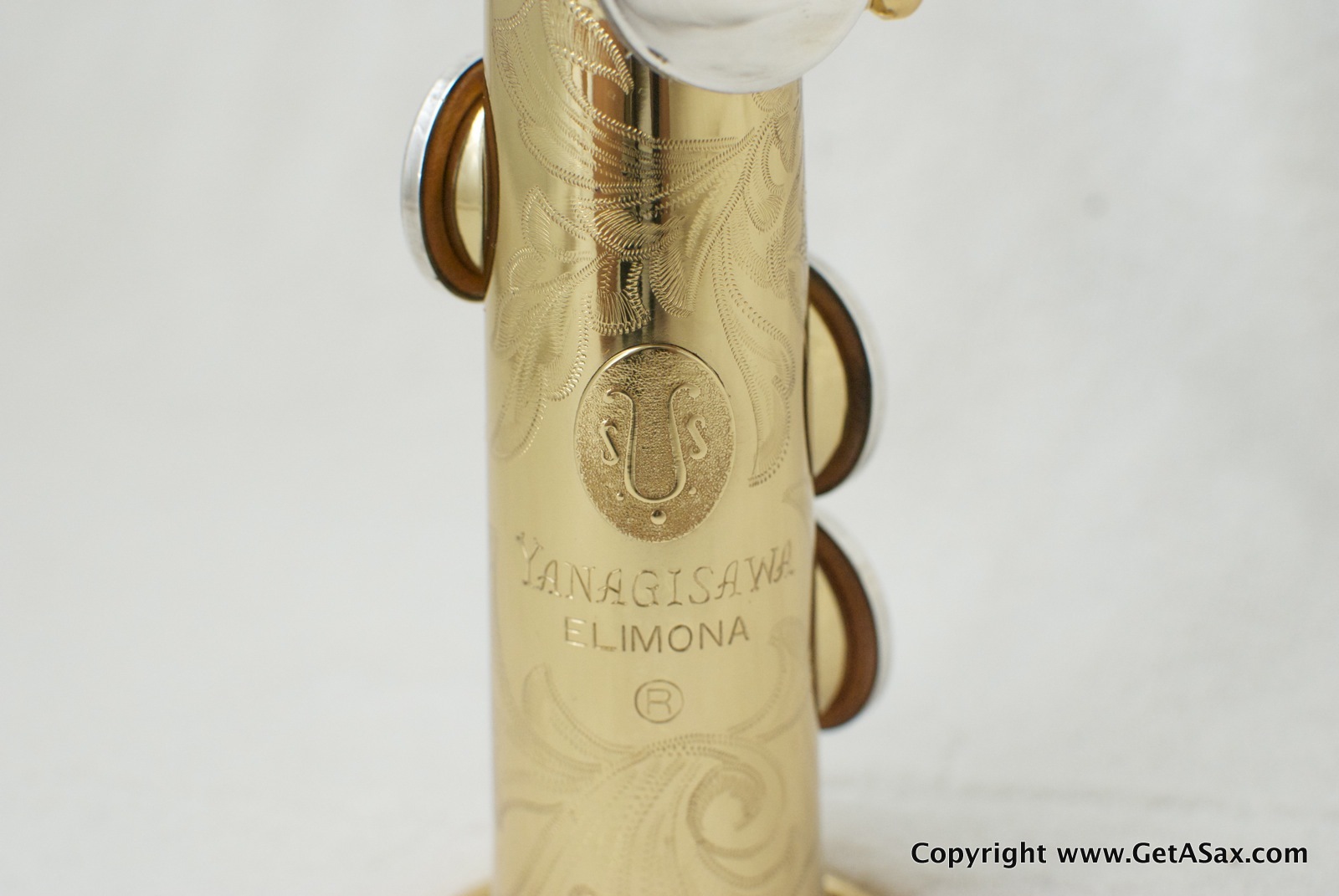With money, dummy!
This is a post for people shopping for a first saxophone under $1500 that is a quality instrument and maintains its value fairly well over time. If you are skimming, here’s the short answer:
- Avoid the cheapest, no-name saxophones because they are basically terrible and disposable. You lose your money invested and get a horn that is not fun to play and that is hard to maintain.
- Feeling conservative? Buy a used Yamaha. It is reliable and holds value well. Budget a few hundred for repair.
- Feeling adventurous? Buy a used vintage saxophone. More interesting tone. Budget $300-500 for repair.
- Want something great? Bite the bullet and buy a used professional horn like a Yanagisawa. Might exceed your budget a bit, but it’s worth it if you have some money to put into a horn. You can get the money back out later if you need to.
Here’s the longer answer:
Shopping for a saxophone for the first time can be challenging. There are LOTS of different brands out there. Thankfully, they break down into a few simple categories. And by answering just a few questions, you can quickly narrow down your options drastically.
BUYING NEW
First, you need to think about price. Think both short term and medium term about this. Over the very short term, you can get a super cheap, $300 saxophone at Wal-Mart that may initially make something like saxophone noises. However, it is basically disposable, so 100% of your investment is gone when you buy it. It is also no fun to play and cannot be easily repaired when it stops playing at all, so this might not be a good idea.
Thinking now about price over the medium term, it gets more interesting. You could buy something that is better made for around $1000-1500, (which is a normal beginner new saxophone price) and it may be more satisfying to play over the first few years. However, unless you buy smart, you may still end up with a worthless saxophone in terms of resale value or necessary repair costs within five years.
The same $1000-1500 can also buy you a saxophone that will still be worth at least a fair percentage of your initial $1000-1500 in five years if you buy smart. Here’s how:
First, buy based on make and model, not solely on price. The bread and butter of many music stores is selling the “Wal-Mart-ish” (that’s a scary adjective!) saxophones for $1000-$1500 and pocketing the difference as pure profit. The saxophones that hold their value comparatively better in this price range are Yamaha (YAS-26, YTS-26, 475 series, 575, 62 etc.). You might also be recommended the following: Selmer (AS-300, AS-500), and also the Cannonball and Jupiter saxophones. I have not heard much good about maintaining Jupiter and Cannonball saxophones however. Usually saxophone techs grumble about working on them. But because those brands have better name recognition in the market than others, then one of these will likely be worth at least half of what you paid for it after five years.
BUYING USED
But if you would rather not lose any of your initial investment, and you want to buy really smart, then you will be greatly rewarded for your effort. You have to resolve two things: First, buy used. A good saxophone doesn’t wear out and is easy to repair, so there is almost only advantage to buying a used high-quality saxophone. For that same $1500, you can buy a used professional model that is a joy to play and that won’t wear out or need to be upgraded soon. And second, don’t buy based on cosmetic appearance alone. The shiniest saxophones are sometimes the worst, and a little “honest” wear from use on a good saxophone is not at all a bad thing.
If you are open to a used, high-quality saxophone that has a little normal cosmetic wear, then your options open up, and you can buy some amazing saxophones. When buying used, it’s good to either buy through a dealer like GetASax.com or leave at least $300 of room in your budget for getting the horn tuned up to play its best. This is good advice for buying a new saxophone also, because many new horns are unfortunately setup really poorly. It is worth asking for advice, because some serious saxophone problems are hard to see unless you are used to looking for them. (See the linked video below.)
That said, one of the first things to do is look for a used Yanagisawa (Yah-nuh-gih-sah-wah), which is, in my opinion the best modern saxophone. Models include the A5, A6, A500, A800, A900, A901, (or insert T prefix for tenor etc.) can be found used at $1500 or lower, if you look around, and older ones like the A500 are good too, but should be priced at $1k or less. I especially like the YAS-52 model for an all-around good value which is usually priced in the $850-$1500 range depending on condition and pads. You can also buy a nicer Yamaha in this price range, like a YAS-62 (the modern intermediate Yamaha. There is a vintage pro Yamaha also called the 62 which is more expensive) or a YAS-475 or one of their several other iterations.
Other top picks in this price range include Keilwerth-made saxophones like the Buffet Expression, SX-90, Couf Superba 1 or 2. If you are willing to go a bit more vintage, you can look for a Beaugnier-made saxophone (google it to find all the names it was sold under). These can be amazing deals for the money. Vintage professional Buffet-made Super Dynaction saxophones can also be found in the $1500 or under category if you don’t mind a fair amount of cosmetic wear.*
If you have a low budget but still want a quality saxophone, look for a Yamaha YAS-23 or YTS-23 model, which is quite well made and sells for $750 or under much of the time, and will still be worth around the same when you want to sell it. (Remember to budget your $150-300 for getting the horn all ready to play well, if you don’t buy through a dealer.)
Finally, if you are seriously interested in saxophone, and reading all this has convinced you that you should just invest in a nice saxophone from the start, instead of throwing money away on a new student saxophone, well, you’ve come to the right place. If your budget has a bit of upward flexibility to buy something really great, that’s what this site is primarily about.
The most bang for your buck, the best build quality, and the most beautiful and best-sounding saxophones are for the most part vintage and modern professional models in good playing condition. Plus they hold their value excellently or even go up in value as you own and enjoy them. If you’re doing marching band or if you are buying for a middle-schooler, I would recommend a used YAS-23 or similar, not a used pro horn, but for other people, this can be a really great buy.
I hope this little summary is helpful. Feel free to post some comments below. There are many more options than this. For instance, there are some better-made Taiwanese horns, but distinguishing among them is not easy for the first-time buyer, and they have the same resale value problems. The goal here was to lay out the basic options fairly simply. If you have questions, feel free to email and I’ll get back to you as soon as I can.
~Brian at GetASax
* If you’re buying used, it is worth watching Matt Stohrer’s helpful video on evaluating a used saxophone for purchase (below). Much of this applies to new saxophones as well.



who’s the guy with all the hair…..?
cheers,philip
Just a Christian Bale gif:-)
Happy Christmas Eve Day, Brian—
I’m a youngish novice, if 64 qualifies, in the market for my first Sax. I love the engraving on the horns of the 30’s on up. OK, I confess: the Conn naked ladies are perfect. Racy for their day, but quaint for ours. Since I’m a novice, I need good ergonomics. Cordially, Neil
I have a sml marigaux king alto. I would like to know whether you think it is worth refurbishing. serial number 23408.
Hi Dawn, The SML Marigaux altos are wonderful professional saxophones, and the straight tone holes that they have are easier to maintain with many repair shops. I would say, depending upon what you want in an alto, it might be a great idea to restore. You will not be able to get fully modern keywork and feel, of course, but if you don’t mind that, you get a gorgeous medium-dark tone, excellent build quality and intonation. So I’d say go for it if you have some good repair options locally.